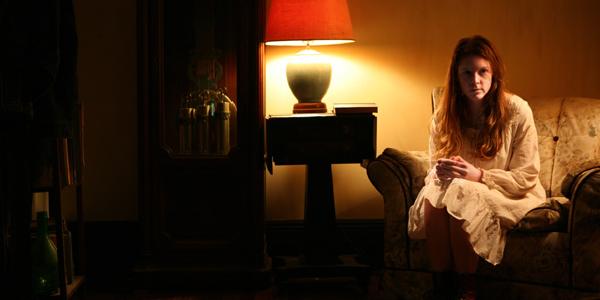Daniel Stamm’s The Last Exorcism hit theaters in 2010 and pulled in $41 million in the States from a budget of $1.8 million. You know a sequel wasn’t too far behind with such a profit. (Minds familiar with the film know why it was called The Last Exorcism, so let’s not argue about that.) I prefer an open end to the narrative myself, but what happens to the Nell Sweetzer of Exorcism, played so brilliantly by Ashley Bell (but more on her later), after the events in the film presents an intriguing concept.
However, promos for this follow-up fail to make the case for its existence, and we’re likely in for the jump scares and cheap thrills modern cinema often throws our way. Moviegoers will decide over the weekend whether The Last Exorcism Part II was worth the effort, but for now, let’s remember Stamm’s 2010 effort for what it is: a flawed yet utterly fascinating, engaging, and quite often subdued exercise in terror.
The film opens with a cameraman nonchalantly standing in the background - you know it’s a “found footage” film from the moment it begins. The “shaky cam” only reinforces the already-established method to the madness. Without pretense, Exorcism sets up that the exorcist at the forefront, Rev. Cotton Marcus, played by Patrick Fabian, doubts the existence of demons and even God. At the beginning, Marcus vows to preach a “banana-bread sermon” and goes through with it. It’s a wink at the audience who knows Marcus is less than convinced of the religious convictions he openly claims as his own. A candid conversation with his son about ghosts confirms he has such doubts about exorcism. An exorcism-related accident Marcus reads about in the newspaper changes his mind from compliance with what he believes are lies to a desire to expose “the scam that it really is.” Like other films about found footage, the quest for which we’ve actually assembled appears as something completely different when we first arrive.
Exorcism gets lots of respect on my end because it’s a horror film that takes time getting to know its lead character, who we see as more of a reverend by occupation than by personal belief. For instance, his lack of offense when one of the filmmakers in the van yells “Jesus Christ!” as an expletive twice in a row comes as quite a shock for such a religious man. Heading out to “take care” of his last exorcism (and we have a title!), Marcus slaps a Christian fish - complete with the Christian cross - to the back of his van as a kind of joke. By the end of the film, though, he takes exorcism quite seriously. That’s it for plot explanation. (I don’t want to give too much away.)
Marcus arrives for his last exorcism, which will be performed on Nell Sweetzer. Before meeting her, though, Exorcism introduces us to her hesitant father Louis, played by Louis Herthum, and withdrawn brother Caleb, played by Caleb Landry Jones, with whom Nell lives. It’s no coincidence that Exorcism plays on obvious inspiration Paranormal Activity with the naming of these characters. It also highlights the naming of protagonist Cotton Marcus: a name so conservative that it’s almost a parody of itself. He’s far from being the noble guy he claims to be.
This naming additionally emphasizes the saccharinely sweet name of Nell Sweetzer. Ashley Bell makes the character as innocent as the name suggests - well, for the most part. With the naivety of a church-girl and peculiar enunciations, she brings you into her secluded, sheltered world. Possessed or not, she lives a life tainted by darkness. The actress refrains herself as she inhabits this refrained, disturbed character. Likewise, Bell turns on a dime to deliver frenetic, haunting work when Exorcism calls her to do so. The awards season of 2010 was reluctant to include her beyond an Indie Spirit nod for best supporting actress, but she deserved more.
To be fair, some portions of Exorcism fall into unfitting places. This most notably comes with the score. It strikes a delicate balance of beautiful and terrifying, but isn’t this supposed to be a “found footage film”? Non-diegetic sounds make no sense in this sort of framework. It’s also a bit much when sinister music plays during a clearly demonic yet less-than-threatening instance.
Still, I don’t think it’s the out-of-place music or the overdone story of demon possession that irks the masses when it comes to Exorcism. No, it’s the last 15 minutes, the rushed third act that detours the action of the film, so to speak. The film ends abruptly on at this point where Marcus completes his ideological journey but thrills still continue until the last shot.
But why do so many find trouble with this ending? Because it didn’t end the right way? Because it comes all of a sudden? To these ends, does it not make sense that an ending so unexpected and unprepared comes into this tense framework? It’s such an odd way to tie things up, so to speak, but it’s a completely understandable direction for this kind of story. It's not as if this ending negates all that we've seen thus far. What we have with Exorcism is a plot carried out by expert acting and a shocking ending that lunges at you with all it’s got.
That said, hopes are low for Part II. As said earlier, it looks rather typical of the genre nowadays with predictable jump scares (and people wonder why the horror genre isn’t taken seriously). Fabian's also missing from the proceedings, which probably doesn't help. Still, here’s hoping Part II lands somewhere near the level of suspense its predecessor inhibited.